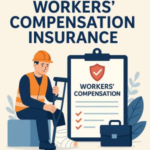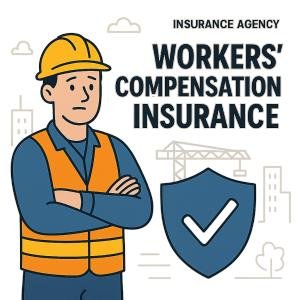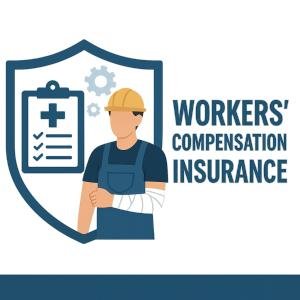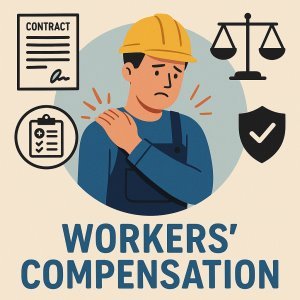
In-Home Care Service Workers’ Comp Return-to-Work Programs That Save Money
July 23, 2025
Driver Monitoring: Reducing Workers Comp Claims for Delivery Teams
July 24, 2025
In the ever-evolving landscape of home healthcare, Georgia’s dedicated home health aides play a vital role in supporting the well-being of countless individuals. Yet, behind their compassionate work lies a pressing concern: a rising tide of injuries that not only impact caregivers’ health but also lead to costly claims for employers.Understanding the top injury trends among georgia home health aides is essential to fostering safer work environments and minimizing risk. This article unpacks the most common injuries faced by these frontline workers and explores practical prevention strategies that can safeguard their health while strengthening the entire care ecosystem.
Table of Contents
- Common Injuries Faced by Georgia Home Health Aides and Their Root Causes
- Ergonomic Challenges in Home Healthcare Environments and Practical Solutions
- The Impact of Training and Education on Injury Reduction
- Implementing Effective Injury Prevention Programs to Minimize Claims
- Q&A
- The Way Forward
Common Injuries Faced by Georgia Home Health Aides and Their Root Causes

| Injury Type | Common Root Causes |
|---|---|
| Muscle Strains | Heavy lifting, poor posture |
| Slips & falls | Wet floors, cluttered areas |
| Sharps Injuries | Needle sticks, improper disposal |
| Fatigue-Related Errors | long shifts, high workload |
- Environmental factors: Inadequate lighting, unsecured rugs, or cramped spaces.
- Ergonomic challenges: Lack of assistive equipment for patient transfers.
Ergonomic Challenges in Home Healthcare Environments and Practical Solutions

Home healthcare aides frequently enough contend with physically demanding tasks such as patient transfers, prolonged standing, and awkward postures imposed by the limited space of private residences. These conditions can lead to repetitive strain injuries, musculoskeletal disorders, and chronic fatigue. Common challenges include navigating cramped rooms, uneven flooring, and the absence of ergonomic equipment like adjustable beds or lifting devices. these factors not only increase the risk of injury but also make it difficult for aides to maintain proper body mechanics, amplifying the likelihood of strain and accidents.
Practical solutions focus on optimizing the existing habitat and implementing supportive practices.Equipping aides with portable assistive devices, promoting regular micro-breaks, and training in safe patient handling techniques are crucial steps. Additionally, modifying homes by clearing clutter and improving lighting can mitigate many risks. Below is a quick reference guide for ergonomic improvements and practices that can effectively reduce injury incidence:
| Ergonomic Challenge | Practical Solution |
|---|---|
| Limited space restricts movement | Rearrange furniture for clear pathways |
| Heavy lifting of patients | Use portable transfer aids and slings |
| Prolonged awkward postures | Incorporate posture training and scheduled breaks |
| poor lighting conditions | Install portable lamps to improve visibility |
The Impact of Training and Education on Injury reduction

- Hands-on simulation of patient transfers and mobility support
- Regular refreshers on body mechanics and posture correction
- Emergency response and injury reporting protocols
- Use of assistive devices and technology to minimize strain
| Training Focus | Impact on Injury Rates |
|---|---|
| Ergonomic Techniques | Reduces back injuries by 40% |
| Patient Transfer Training | Cuts sprain incidents by 35% |
| Safety Protocols | Improves injury reporting accuracy by 50% |
Implementing Effective Injury Prevention Programs to Minimize Claims

Creating a robust injury prevention program begins with a thorough risk assessment tailored specifically to the unique challenges faced by home health aides in Georgia. Identifying common hazards such as manual patient handling,repetitive motion,and environmental factors within clients’ homes allows agencies to design targeted interventions. Effective strategies often include:
- Regular ergonomics training focusing on safe lifting and posture
- Provision of assistive devices and equipment
- Continuous education on recognizing early signs of strain or injury
- Implementation of reporting protocols for near-misses and unsafe conditions
By prioritizing these elements, agencies not only reduce the frequency and severity of injuries but also promote a culture of safety that empowers aides. Importantly, ongoing monitoring and feedback mechanisms ensure the program evolves with emerging trends, keeping injury rates-and subsequent claims-consistently low.
| Prevention Focus | Benefit |
|---|---|
| Ergonomics Training | Minimizes musculoskeletal injuries |
| Assistive Devices | Reduces physical strain |
| Early Reporting | Prevents escalation of minor injuries |
| Safety Culture | Enhances overall workplace morale |
Q&A
Q&A: Top Injury Trends Among Georgia Home Health Aides and How to Prevent Claims
Q1: What are the most common types of injuries experienced by home health aides in Georgia?
A1: Home health aides in Georgia frequently encounter musculoskeletal injuries, especially strains and sprains related to patient lifting and transfers. Slips, trips, and falls are also prevalent due to cluttered environments or wet floors.Additionally, repetitive motion injuries and sharps-related wounds can occur during daily tasks.
Q2: Why are musculoskeletal injuries so widespread among home health aides?
A2: Many home health aides perform physically demanding duties, such as lifting or repositioning patients, frequently enough without ergonomic equipment. The unpredictable home environments also mean aides often work in cramped or awkward spaces, increasing the risk of back, shoulder, and joint injuries.
Q3: How does the home setting in Georgia contribute to injury risks for aides?
A3: Unlike clinical settings,homes vary widely in layout,cleanliness,and available equipment. Uneven flooring, narrow hallways, pets, and clutter add hazards. Moreover, aides may lack immediate access to safety aids or assistance, heightening the chance of accidents or strain injuries.Q4: What preventive measures can reduce injury claims among home health aides?
A4: Prevention starts with comprehensive training focused on safe patient handling, proper body mechanics, and hazard recognition. Providing aides with portable assistive devices, encouraging regular breaks to prevent fatigue, and fostering open communication about unsafe conditions are also crucial steps.
Q5: How can agencies support home health aides to minimize injury risks?
A5: Agencies should implement routine safety assessments of client homes, offer ongoing education, and equip aides with appropriate tools. Encouraging a culture of reporting near-misses can help identify risks early. Additionally, mental health support can reduce stress-related errors that lead to injuries.
Q6: What role does technology play in preventing injuries among Georgia’s home health aides?
A6: Technology like mobile apps can provide aides with quick access to safety protocols and ergonomics tips. Wearable devices can monitor posture and movements, alerting aides to risky behaviors. Telehealth tools also allow supervisors to remotely assess situations and offer real-time guidance.
Q7: Are ther any regulatory or policy initiatives addressing injury prevention for home health aides in Georgia?
A7: Georgia follows federal OSHA guidelines and encourages adherence to the Safe Patient Handling and Mobility standards. State-level programs aim to raise awareness and fund training initiatives. However, the home care industry continues to advocate for stronger regulations tailored to the unique challenges aides face in private residences.
Q8: What is the outlook for injury trends among Georgia home health aides in the near future?
A8: With increasing demand for home care, injury risks remain a significant concern. However, proactive investment in education, technology, and policy improvements offers hope for reducing claims.Collaboration among agencies, clients, and healthcare systems will be key to fostering safer working conditions.
The Way Forward
In the demanding world of home health care, recognizing and addressing injury trends among Georgia’s aides is not just a matter of compliance-it’s a vital step toward fostering a safer, more supportive environment for those who dedicate themselves to caring for others. By staying informed and proactive, agencies and aides alike can reduce the risk of injury, safeguard well-being, and ultimately ensure that the focus remains where it belongs: on compassionate, high-quality care. Prevention is a shared responsibility, and with the right strategies in place, the cycle of injury claims can be broken, paving the way for healthier workdays and stronger communities.
“This content was generated with the assistance of artificial intelligence. While we strive for accuracy, AI-generated content may not always reflect the most current information or professional advice. Users are encouraged to independently verify critical information and, where appropriate, consult with qualified professionals, lawyers, state statutes and regulations & NCCI rules & manuals before making decisions based on this content.”







